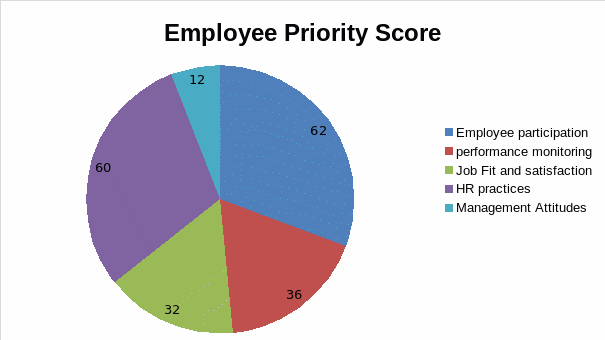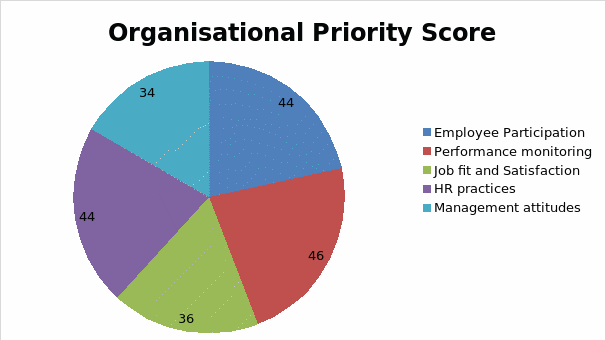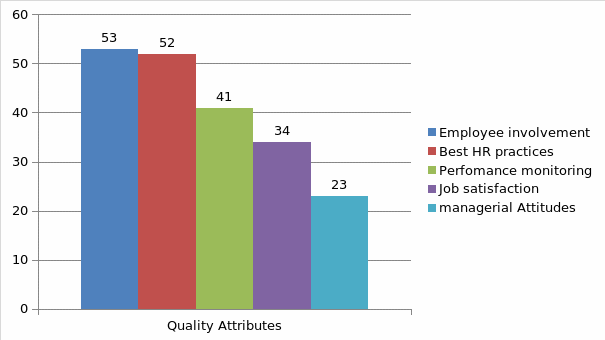Introduction
The Dubai Customs has over 11 global operation standards. The diversity of the global standards establishes a need for the evaluation of the quality culture in the organisation. The research focuses on the most effective strategies that can be implemented to enhance a quality culture of the organisation. A survey was conducted to establish some of the quality attributes present in the organisation. Additionally, the survey, which comprised of questionnaires, was found to be essential for the identification of challenges affecting the proper implementation of a quality culture.
Data collection methods
The research used personal interviews and a self-administered survey to collect information from the research participants from the organisation. The personal interviews comprised a set of five questions that were administered to three individuals. The interviews contained open-ended questions that were meant to expand the scope of the research findings. One of the advantages of an open-ended interview is the ability to collect projected and non-projected information from the research participants. The questions focused on the managerial responsibilities in enhancing a quality culture for the organisation.
The self-administered survey comprised a majority of close-ended questions and a few open-ended questions. However, the open-ended questions were meant to elaborate some of the responses from the close-ended questions. The questions focused on the roles and professional responsibilities of participants. Additionally, they evaluated the levels of relationships between the employees, the management, and the customers. The surveys will assess some of the challenges faced by the employees working for the Dubai Customs. The challenges will be essential in evaluating some of the causes of a poor quality culture in the organisation.
Sample selection
Two members from the executive management were selected based on their availability within the research timeframe. Emphasis was placed on the cargo, customs development and human resource sections. The human resource and the customs and development directors agreed to participate in the interview. The research selected three non-executive managers to participate. The non-executive directors had direct influence and interactions with employees and customers. In the self-administered survey process, 15 participants were selected randomly from all departments. Additionally, a senior manager from the corporate communication section was contacted, and he agreed to take part in the survey.
The research limited the number of participants to 20 because of time constraints and the busy schedules of the target participants. Some of the surveys were conducted over the phone after realising that a face-to-face interaction was impossible or inconveniencing to the participant. The identities of the participants were concealed to prevent a breach into the research ethical standards.
Personal interview
- Can you say whether the organisation has a culture of quality?
- What are the strategies that can be applied to enhance the quality culture in the organisation?
- Which are some of the challenges that you have faced in pursuit of a culture of quality?
- What is your level of interaction with traders and employees?
- Do you think the company adheres to all the stipulations in the quality assurance (QA) system?
Self-administered survey
How long have you worked in this organisation?
- 0-5 years
- 6-10 years
- 11-15 years
- 16-20 years
- 20 or more years
Check the appropriate professional field
- Policy and Legislation
- Customs development
- Cargo Operations
- Passenger operations
- HR, Finance and Administration
- Customer Management
- Community affairs and government partnership
Have you ever worked in a similar organisation?
- Yes
- No
What is your highest confirmed level of education?
- High school
- Vocational tertiary institutions
- Undergraduate
- Graduate
- Postgraduate
On average, how many hours do you work in a week?
- Below 30 hours
- 31-35 hours
- 36-40 hours
- 40-45 hours
- Above 45 hours
What is your salary scale?
- Below £ 5000
- £5001-10000
- £10001-15000
- £15000-20000
- Above £ 20,000
What is your average rating of the company’s quality culture? One represents too low while five represent a rating of very high.
- Very low
- Low
- Moderate
- High
- Very High
Have you ever received any in-practice professional training throughout your employment period?
- Yes
- No
On a scale of one to five, with one representing the lowest possible score, where do you rate your communication strategy and information processing frameworks?
- Very low
- Low
- Moderate
- High
- Very High
Kindly arrange the following attributes according to their level of importance in enhancing quality in the organisation.
- Employee participation and Communication
- Transparency in financial and organisational operations
- Performance monitoring and feedback
- Employee-job fit and satisfaction
- Best human resource practices including rewards, better shifts, and training
- Managerial attitudes
Which strategies do you think are currently emphasised by the organisation?
How can you rate your organisation’s commitment to international quality standards in a range of one to five?
- Very low
- Low
- Moderate
- High
- Very High
In a level of one to five, where does the organisation stand in its commitment to customer satisfaction?
- Very low
- Low
- Moderate
- High
- Very High
How do you rate the current employee motivation and job satisfaction levels on a scale of one to five?
- Very low
- Low
- Moderate
- High
- Very High
How would you rate the effectiveness of implementing priority quality attributes in enhancing quality of the organisation?
- Very low
- Low
- Moderate
- High
- Very High
Do you think the company should review its quality standards and frameworks?
- Yes
- No
How can you rate the efficiency demands in the organisation?
- Very low
- Low
- Moderate
- High
- Very High
How do you rate the level of employee involvement in decision-making, information sharing, and corporate responsibilities?
- Very low
- Low
- Moderate
- High
- Very High
In a range of one to five, what is the company’s commitment to establishing, implementing, and sustaining its key performance indicators (KPI)?
- Very low
- Low
- Moderate
- High
- Very High
Do you believe that the company can enhance its quality culture by implementing appropriate and objective strategies?
- Yes
- No
Findings and discussion
All the participants participated and completed the survey process. The interview was characterised by brief answers because most of the participants were interviewed either over the phone or by mail because of the constricted interview schedules. The management argued that the organisation was already initiating quality improvement strategies from its QA system. Three of the interviewees considered feedback policies and performance monitoring essential components of organisational quality.
One non-executive interviewee argued that best HR practices would transform the performance of employees. The other interviewee argued that transparency and appropriate managerial functions were essential in the transformation of the organisation to a quality culture. All the interviewees agreed that there were communication and employee participation challenges. Additionally, they claimed that a good relationship between the employees and the management would transform productivity and delivery of quality services.
In the self-administered survey, 55 percent of the participants considered HR practices and job satisfaction key factors in enhancing a quality culture. Twenty percent considered performance monitoring appropriate in safeguarding stakeholders’ interests. Sixty percent of participants supported in-practice training and quality awareness initiatives from the management.
Management practices were found to have a significant influence on employee performance. Employee participation in information sharing and HR practices had the highest scores from over eighty percent of the participants. Employee participation had a mean of 1.93 while HR practices had a mean of two, with a score of one representing the highest priority.
Employee participation in information sharing, performance monitoring, and HR practices are some of the best strategies that can be applied to enhance the quality culture of Dubai customs. A quality-training program should be implemented in all the departments. The program should address best communication practices, interdepartmental coordination, information sharing, and participation in self-assessments.
Additionally, the HR department should engage in employee motivation and reward programs. There should be a correlation between shift periods and remuneration rates. The section managers should initiate performance monitoring and mentorship programs to enhance employee competence and continuous involvement in the excellence cycle.
The research identified five attributes that were essential in improving a quality culture in the organisation. One of the first attribute, which is also a research variable, was employee participation and communication. The variable was essential in enhancing the involvement of employees in decision-making activities. Additionally, it correlated with improving the level of engagement across all departments. It had a standard deviation of 0.799 for employee priorities and 1.46 for the organisational responses. The other important attribute was performance monitoring and feedback analysis. The attribute was found to be essential in the evaluations of employee productivity and efficiency.

The management identified this attribute as the most essential with a variance of 2.35. Additionally, the cross tabulation mean of employees’ responses was 2.73. This showed a significant emphasis in performance monitoring by the management. The other attribute was employee job-fit and satisfaction. The attribute was associated with appropriate recruitment procedures.
Additionally, it focused on job-specific roles. In the interview, one of the participants claimed that some employees’ complaints involved being assigned roles that are not within their academic qualifications. The attribute also scored 32 percent in the analysis of employee priorities and 36 percent in the organisational analysis. The other attribute was best human resource practices. The attribute focused on the significance of enhancing HR practices in improving a culture of quality. Some of the best HR practices include talent management, rewards, salary increments, and appropriate role allocation.
The shift durations were also found to be affecting the morale and attitudes of the employees. The attribute was strongly supported by the employees with a score of two in a scale of one to five (1 representing highest priority). Additionally, the employee priority goal was at 62 percent while that of the management had a score of 44 percent. This demonstrated the significance of appropriate HR practices in enhancing productivity and efficiency among employees.

The last attribute was managerial attitudes towards change, communication, transparency, and integration. Managers have a significant role in uniting the workforce. Additionally, they are responsible for establishing and influencing any culture in an organisation. They are leaders who are expected to lead by example. However, the questionnaire found a surprising belief in the organisation’s rank of quality attributes. The attribute was the least favoured in enhancing the culture of quality.
Employees ranked the attribute last in their priority list with a score of 4.47. Additionally, they claimed that the management had also ranked the attribute last with a score of 3.3. In the employee priority list, one person (6.67 percent) of the participants gave a ranking of between one and two. However, the situation was different in the organisational priorities with 26.67 percent of participants giving a score of between one and two. Despite the slight difference between the two priority lists, the attribute was still ranked last.
The research found a strong correlation between quality attributes and employee perceptions. Some of the challenges experienced include time constraints and getting the right opportunity for interviewing the management. However, the response rate was very good and the results are credible. All ethical issues were followed to avoid compromising the privacy of the respondents.

The figure 3 above shows the major attributes that should be addressed to improve the culture of quality in the organisation. The order of priority emphasises on the employee involvement in decision-making activities and information sharing.
